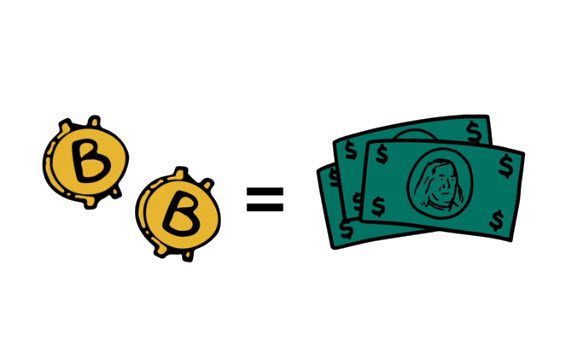Fake Cryptocurrency Exchanges
Fake and unregulated cryptocurrency exchanges scam potential victims by posing as legitimate exchanges. Scam exchanges often lure users with a celebrity endorsement, unsolicited phone calls, or emails promising extraordinary returns on investments. Once directed to an exchange, users might receive frequent emails or phone calls with reassurances on the legitimacy of investing with these fake bitcoin exchanges.
If an investment is made, users might be asked to pay high initial fees before being given fake information via a falsified trading portal showing manipulated trades from the exchange. Clients may then receive harassing calls, be pressured through other means to invest more, or be induced to do so with fake returns showing extraordinary profits. If any attempt is made to withdraw funds, users may then face a series of obstacles, such as unannounced fees or fake taxes. They may even discover that their money has disappeared altogether.
Examples of Fake Exchanges
In 2017, South Korean authorities exposed one of the most notorious fake cryptocurrency exchanges. BitKRX was named to look like the cryptocurrency arm of the legitimate and largest financial trading platform in the country, Korea Exchange (KRX) — a common technique for fake exchanges trying to establish legitimacy quickly.
based on public goodwill towards KRX, BitKRX was able to lure investors who believed BitKRX was run by KRX. But when clients who thought they had purchased bitcoin tried to access their funds, they discovered their money had vanished.
Authorities also arrested two men behind Komid, another South Korean exchange, who were scamming investors from the start. Their scheme entailed luring customers to cryptocurrencies, and disseminating false information about token listings. Following this, the third-largest cryptocurrency exchange in South Korea, Coinbit, was seized by police, as reports found that 99% of its transaction volume was faked.
In another crypto scam discovered by a joint investigation in the Netherlands and Britain, six people were arrested for creating a fake online cryptocurrency exchange, which duped more than 4,000 victims in 12 countries out of an estimated $27 million USD in crypto. Scammers were able to access bitcoin wallets by “typosquatting,” which relies on accidental typos or domain errors entered by a user. The victim is then directed to a fake website that’s made to look like the legitimate site the user intended to access. This fake website’s address may have only one letter that’s different from the authentic exchange, a small detail that’s easy to overlook.
How to Identify Fake Cryptocurrency Exchanges
The most common advice for cryptocurrency holders is to turn to only well-known and respected cryptocurrency exchanges. Reputable exchanges should have an extensive social media presence, website, and verifiable employees. They should also have an established history among researchers and the cryptocurrency community. Research before creating an account, and check to see whether other users or established researchers in the cryptocurrency field can confirm its legitimacy.
Some additional red flags typical of a fake exchange include:
If an exchange promises a rate of return on an investment that seems too good to be true, it most likely is. Any offers of guaranteed returns, especially those that promise exceptional returns in the first days or weeks after registering on the exchange, are a telltale sign of a fake exchange.
Don’t succumb to any pressure to deposit funds or make a larger investment than you intended. Legitimate exchanges will not deploy such tactics to solicit clients.
Excessive communications that look like spam, especially those that continue to ask for persistent recharging of wallets, may be a sign that the exchange is trying to collect funds to be misappropriated.
Be wary of any unsolicited offers or calls with advice on investing or buying cryptocurrencies. Even if the calls are said to be from financial advisors or brokers, if such calls are originating from an unregulated cryptocurrency exchange, it may be an indicator that something illegal is afoot.
Platforms that ask for unusually high registration or withdrawal fees that were not previously disclosed should also be avoided and reported.
As with a scammy or malware-infected website, questionable exchanges may look different from a legitimate exchange. These scams may rely on well-worn social engineering attack techniques to trick potential users to invest.


